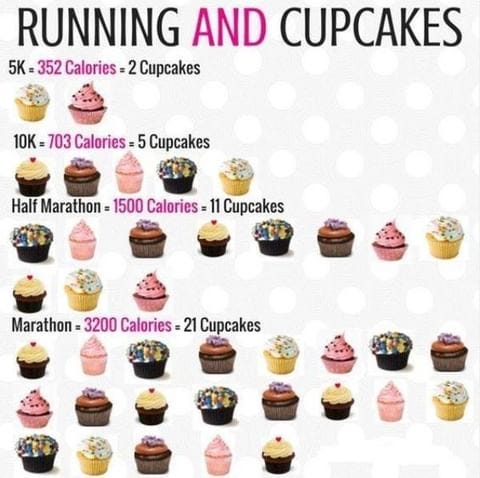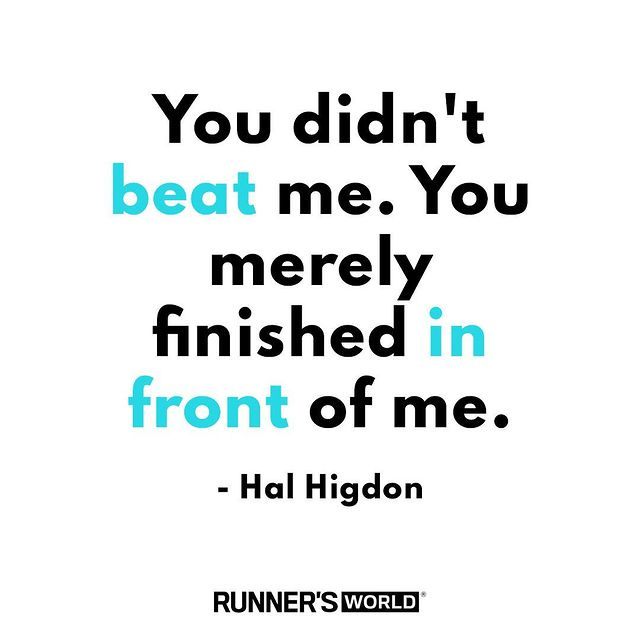Greatest Races in the World - The Boston Marathon
Author’s Note
We’ve been publishing for four months, as of this weekend! A thank you to all our readers and subscribers for the love, likes, comments and feedback! If you like our content, please do endorse us to your friends! :)
Dear reader,
Welcome to Weekly Carb-Loading! Your Sunday morning dose of running and fitness inspiration.
We believe every run has a story, and we’re bringing these stories to you, with runner profiles, race histories, home workouts and a whole lot more!
This week, we take you on a tour of history, and cover the oldest annual marathon, and one of the greatest races in the world. We also continue our ‘Runner Workout’ series, as well as an inspirational short film about a Nepal-based ultra runner.
Before we dive in, if Gmail sent this newsletter to your ‘Promotions’ tab, you can simply drop us an email in reply, to prevent this from happening. Just a ‘Hi’ should do. You may also scroll to the very end of this post for more solutions. Thanks!
The Boston Marathon
Marathon running has come a long way since the mythical run of Pheidippides, a Greek messenger who ran from Marathon to Athens to announce their victory over Persia in the Battle of Marathon, in 490 B.C.
To honor Pheidippides’ achievement, the first Modern Olympic Games held in Greece in 1896 included a race across the same distance - the first competitive ‘Marathon’.
Members of the Boston Athletic Association (‘BAA’), inspired by their experience at the Games, returned home with an idea - to organize the Boston Marathon, in April of 1897. It was the first competitive marathon to be held annually, and to date is the oldest annual Marathon in the world. Its 123rd edition was run last year.
Did You Know
The 1918 edition of the Boston Marathon featured a military relay rather than an individual race, due to the US’ involvement in World War I!

Traditionally, the Boston Marathon takes place on Patriots Day, the 3rd Monday of April, marking the start of the American Revolution.
It is also part of the six ‘World Marathon Majors’, the most popular and sought-after marathons in the world.
Attracting the best distance runners, sporting a field of over 35,000 athletes, and half a million fans, friends and family cheering them on, it is one of the largest, and most coveted races in the calendar.
—
Heartbreak Hill
This half-mile incline, occurring at Mile 20 of the course, forces runners to drag their tired legs and bodies up-hill, at a point in the race when they are close to ‘hitting the wall’.
The famous term was coined during the 1936 Boston Marathon. It was on this incline that Ellison ‘Tarzan’ Brown, having dominated most of the race, lost a large amount of time to his rival, and previous year’s winner, Johnny Kelley.
As Kelley passed the race leader, he gave him a pat on the back. This infuriated Brown and spurred him on to a first-place finish, ‘breaking Kelley's heart’ (and spirit) along the way. Kelley eventually finished fifth.
Did You Know
Although both the start and finish lines have been moved over the years, much of the original course remains exactly as it was designed!
—
The Infamous Bib No. 261
In 1967, Kathrine Switzer became the first registered woman participant to run the Boston Marathon. At the time, BAA rules prohibited women from participating, so Switzer registered using only her initials, ‘K.V. Switzer’.
On race-day, runner No. 261 took her place among other registered runners, initially blending in thanks to her gray sweatsuit. A few miles in, race organizer Jock Semple spotted her, and tried to pull her off the course, but Switzer kept running, undeterred.
The incident, and the shocking photos that resulted, paved the way for women's participation in the marathon in 1972, and opened up conversation about women's place in the world of sports. Bib No 261 has since been officially retired.

Did you know?
Roberta ‘Bobbi’ Gibb, the bandit runner, is recognized as the first woman to run the entire Boston Marathon, doing so in 1966, even though women weren’t officially allowed to race until 1972. Gibb, who did not run with an official race number or bib during any of the three years (1966-68) hid in the bushes near the start until the race began.
—
Bomb Blasts - Hope & Resilience
In 2013, two home-made pressure cooker bombs rocked the finish line of the Boston Marathon, killing 3 and injuring more than 260 athletes and spectators.
The city of Boston, and athletes all over the world rallied together, in support and sympathy. The slogan ‘Boston Strong’ rapidly spread around the world, and was a popular hashtag as an expression of Boston’s unity in the aftermath of the attack.
The following year, more than 36,000 runners showed up to participate across the legendary course, cheered on by a record crown of more than a million spectators.
Meb Keflezighi, at the age of 38, became the first American to win the men’s race in 30 years, and the oldest winner since 1930. His surprising victory changed the atmosphere at the finish from memories of carnage, to a place for celebration and delight, hope and resilience.
To honor the victims of the bombing, Keflezighi had written their names on his bib before pinning it on his singlet.
—
Course Records
In 2011, Geoffrey Mutai of Kenya broke the World Record (‘WR’) for the fastest time over the marathon distance, at the Boston Marathon, with a time of [02:03:02]
Although Dennis Kimetto, also of Kenya, bettered his WR by five seconds in Berlin in 2014, Mutai’s time remains the Boston Marathon Men’s Course Record.
Among the women, Bezunesh Neba of Ethiopia, holds the Course Record, with a mark of [02:19.59] since 2014.
Runner Workouts - Back Strengthening
This section brings you simple, easy-to-do home workouts that puts you on the road to becoming a stronger runner, and a healthier and fitter version of yourself!
Back Workouts
The strength of the back is one of the most important parts of a runner’s arsenal.
Our workplaces have us sitting in one position for extended periods of time, which results in build-up of stress on the back and poor posture. For some, this may also cause back pain.
A strong back stabilizes our body on every step of the run, helps re-distribute the impact and results in much better posture, all of which improves running efficiency (reduces the amount of energy spent by the body per step)
Running efficiently allows you to conserve energy, run longer distances and at a faster pace.
A strong back also helps prevent injury, as you increase mileage through the running season and in the lead up to a marathon.
—
Back workouts are extremely useful in a variety of others sports and cardio workouts too, such as cycling and swimming. A strong back provides stability and strength.
For those who are regulars at the gym and aim to lift heavier weights (once the pandemic has passed), a stronger back provides the stability to do so.
Even for those who do not workout at all, a few simple back strengthening exercises help to improve posture, and keep back pain away over the long term.
—
Introducing a few simple back strengthening exercises from the video below into your routine, once or twice a week, is a good start.
As with any workout, start with a low weight or body weight, and concentrate on slow movements, to get your form right, before increasing intensity. You may pause the video as many times as you need, in case you are tired. Try the workout in front of a mirror.
Quick tip: For absolute beginners, it would be helpful to have a few weeks of regular physical activity, like walking, jogging or cycling, before trying to strengthen the back. You may also start without using the bottles shown in the video below.
New to workouts, and wondering how to get started?
Over the last two months, we’ve covered a range of Beginner Workouts. If you missed any of them, you can catch up in the Beginner Workouts section of our Archive!
General Instructions: Please wear sturdy shoes and loose, comfortable clothing. Hydrate well during the workout. If you experience unusual pain in any part of your body, stop immediately and seek medical advise from your doctor.
What We’re Watching
A story of true grit and determination. A story of inspiration.
A story about Mira Rai, from a traditional Nepali village, who broke through all of Nepal’s female stereotypes and barriers, to run.
She is now a world class trail ultra-runner.
Fun Feature
Cupcake lovers out there, now you know! :D
Quote of the Week
Running is and always will be a solo sport. You are your own competition!
That’s a wrap from us this week!
If you like this post, do share it with your friends on Whatsapp, and subscribe to receive a fresh dose of carbs in your inbox every Sunday morning!
Follow us on Twitter for small servings of carbs throughout the week.
Stay healthy, stay fit, and stay safe!
- Team WCL <3
Gmail sometimes sends us to your ‘Promotions’ tab. Here are a few ways to prevent this from happening
Drop a reply to this email <weeklycarbloading@substack.com>. A simple ‘Hi’ should be good enough
Open any email from Weekly Carb-Loading in your Web-browser
At the top of the email, under ‘More’ (three vertical dots) select ‘Filter Messages Like These’ -> ‘Create A Filter’
Select the second-from-last box ‘Categorize As..’ -> ‘Primary’, as well as the last box ‘Apply the filter to all matching conversations’
Click ‘Create’, and you’re done! All future emails will automatically be redirected to your Primary inbox
You may also choose to
Mark emails from ‘Weekly Carb-Loading Newsletter’ as ‘Important’
Add <weeklycarbloading@substack.com> to your Contact List




